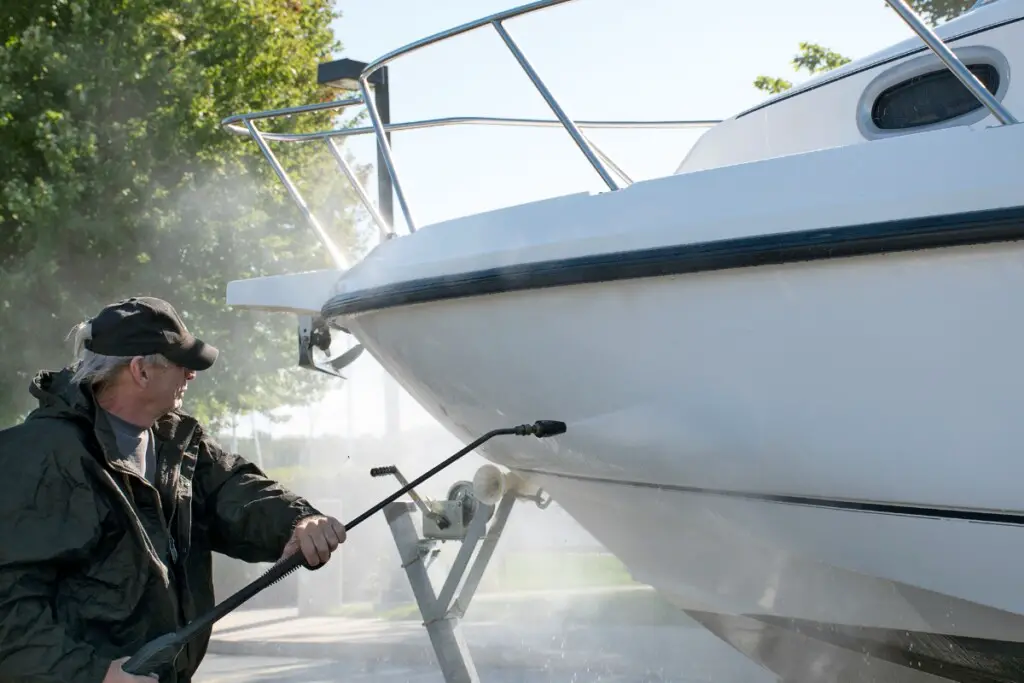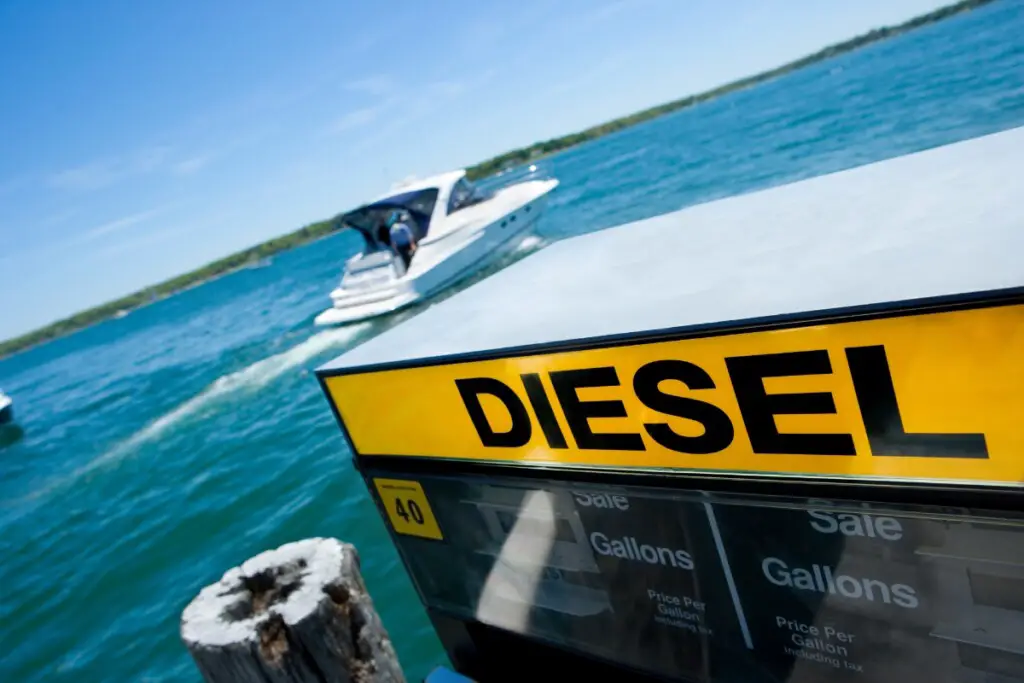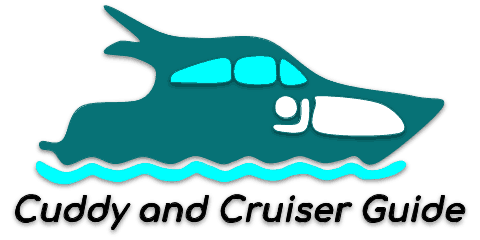Fuel efficiency is a vital aspect of boating, not only for the money you’ll save but also for reducing your environmental impact. As a responsible boat owner, it’s essential to understand the various factors that contribute to your boat’s fuel consumption, as well as the steps you can take to optimize it.
In this comprehensive guide, we’ll explore a range of methods and tips to help you get the most out of every drop of fuel, from engine maintenance to trip planning, and even selecting the right propeller. By following the advice in this article, you’ll not only improve your boat’s performance but also make your boating experience more enjoyable, sustainable, and cost-effective.
So, let’s set sail on this journey to better fuel efficiency for your boat!

Maintain Your Engine
Poor marine engine maintenance can have a significant negative impact on fuel efficiency. Neglecting engine maintenance can lead to several issues that increase fuel consumption and reduce overall performance. Here are some ways poor marine engine maintenance affects fuel efficiency:
- Clogged or dirty fuel system: Over time, debris, dirt, and deposits can accumulate in the fuel system, including the fuel filter, injectors, and carburetor. This can restrict fuel flow and reduce the engine’s efficiency, leading to increased fuel consumption.
- Dirty air filter: A clogged or dirty air filter can restrict airflow to the engine, causing it to work harder and consume more fuel. Regularly cleaning or replacing the air filter can help maintain optimal air-fuel mixture and engine performance.
- Worn or damaged spark plugs: Worn, fouled, or damaged spark plugs can cause incomplete combustion, leading to reduced engine power, poor performance, and increased fuel consumption. Regularly inspecting and replacing spark plugs as needed can help maintain fuel efficiency.
- Incorrect engine timing: Poor maintenance can cause the engine’s timing to be off, resulting in inefficient combustion and increased fuel consumption. Regularly checking and adjusting engine timing can help optimize fuel efficiency.
- Sludge buildup: Failing to change engine oil regularly can lead to sludge buildup, which can increase friction and reduce the engine’s efficiency. Regular oil changes can help prevent sludge formation and maintain optimal engine performance.
- Worn or damaged engine components: Poor maintenance can cause engine components to wear out or become damaged over time, leading to reduced engine efficiency and increased fuel consumption. Regularly inspecting and replacing worn or damaged components can help maintain fuel efficiency.
- Suboptimal propeller condition: A damaged, worn, or improperly matched propeller can cause the engine to work harder and consume more fuel. Regularly inspecting the propeller and ensuring it’s in good condition and properly matched to the engine can help optimize fuel efficiency.
Proper engine maintenance is crucial for fuel efficiency. A well-tuned engine will consume less fuel and perform better. Here’s what to keep in mind:
- Regularly change the oil and oil filter to ensure a clean and efficient engine.
- Replace the fuel filter and air filter to prevent contaminants from entering the engine.
- Inspect and clean the spark plugs, replacing them if necessary, to maintain optimal ignition.
- Check and adjust the timing and idle settings as needed for smoother engine operation.
- Make sure your cooling system is functioning correctly to prevent overheating and inefficiency.

Keep the Hull Clean
A clean hull reduces drag and improves fuel efficiency. Over time, marine growth can accumulate on the hull, causing increased resistance in the water. To maintain a clean hull:
- Regularly clean the hull with a soft brush or pressure washer, removing any algae, barnacles, or other growth.
- Apply antifouling paint to discourage marine growth and reduce the need for frequent cleanings.
- Consider using a boat lift or dry storage when not in use to minimize hull exposure to water.
Opt for the Right Propeller
The right propeller can significantly impact your boat’s fuel efficiency. When selecting a propeller, consider these factors:
- Material: Aluminum propellers are lightweight and affordable, but stainless steel props offer better durability and performance.
- Pitch: A higher pitch propeller can increase top-end speed, but may decrease acceleration and fuel efficiency at lower speeds.
- Diameter: Larger diameter propellers generally provide more thrust, but smaller diameter props can be more fuel-efficient in certain situations.

Distribute Weight Evenly
Weight distribution on a common boat (bass boat, cruiser, cuddy cabin, bowrider, etc.) plays a crucial role in fuel efficiency. Proper weight distribution helps to maintain optimal performance and handling, while poor distribution can lead to increased fuel consumption. Here’s how weight distribution affects fuel efficiency on a boat:
- Planing: When a boat is properly balanced, it will plane more quickly and efficiently. Planing is when the boat rises on top of the water, minimizing drag and allowing for higher speeds. If the weight is unevenly distributed, the boat may struggle to achieve or maintain plane, resulting in increased drag and fuel consumption.
- Trim: Weight distribution impacts the boat’s trim, which is its angle relative to the water. Improper trim can cause the bow to ride too high (bow-up trim) or too low (bow-down trim), both of which can negatively affect fuel efficiency. A bow-up trim increases drag, while a bow-down trim causes the boat to plow through the water, leading to inefficient performance and higher fuel consumption.
- Stability: Proper weight distribution contributes to the boat’s stability, which in turn affects fuel efficiency. An unstable or unevenly balanced boat may require more engine power to maintain course and speed, leading to increased fuel consumption.
- Turning and maneuverability: Weight distribution also affects a boat’s turning ability and responsiveness. An improperly balanced boat may require more power to maneuver or turn, leading to higher fuel consumption.
- Resistance: Uneven weight distribution can cause increased hull resistance in the water, requiring more engine power and fuel to maintain speed. Proper weight distribution helps minimize resistance, contributing to better fuel efficiency.
To optimize fuel efficiency, it’s essential to distribute weight evenly along the boat’s centerline and consider the boat’s fore-and-aft balance. This includes positioning passengers, gear, and fuel evenly and adjusting the boat’s trim using trim tabs or the motor’s tilt and trim function when necessary. Regularly checking and adjusting weight distribution as needed can significantly improve a boat’s fuel efficiency, performance, and handling.
Improper weight distribution can negatively affect your boat’s performance and fuel efficiency. To optimize weight distribution:
- Store heavy items low and near the center of the boat to minimize the impact on balance and stability.
- Avoid overloading your boat, as excess weight increases drag and fuel consumption.
- Periodically reassess your boat’s load and adjust as necessary to maintain an even weight distribution.
Plan Your Trips Wisely
Smart trip planning can help you save fuel by minimizing unnecessary travel and optimizing your route. When planning a trip:
- Use GPS and navigation tools to plot the most direct and efficient route to your destination.
- Monitor weather conditions and water currents to avoid unfavorable conditions that can increase fuel consumption.
- Consider traveling at off-peak times to avoid congestion and reduce the need for frequent stops and starts.
Monitor Your Speed
Higher speeds generally consume more fuel, but finding the most fuel-efficient speed for your boat can be a bit of trial and error. To optimize your speed:
- Experiment with various speeds and throttle settings to determine the best balance between speed and fuel consumption.
- Use a fuel flow meter to track your fuel consumption in real-time and adjust your speed accordingly.
- Be mindful of your boat’s “hull speed” – exceeding this speed can lead to dramatically increased drag and fuel consumption.

Use Trim Tabs and Hydrofoils
Trim tabs and hydrofoils are devices used on boats to improve performance, stability, and fuel efficiency. They both function by manipulating the flow of water around the hull, but they serve different purposes and operate in slightly different ways.
- Trim tabs: These are adjustable metal plates mounted on the transom (the rear) of a boat. They are typically controlled by a hydraulic or electric system, allowing the captain to adjust the angle of the tabs relative to the boat’s hull. By changing the angle of the trim tabs, the captain can adjust the boat’s attitude (angle in relation to the water) to achieve better performance and handling. Trim tabs help reduce bow rise during acceleration, improve the boat’s ability to plane, and minimize the effects of uneven weight distribution.
- Hydrofoils: These are wing-like devices mounted on the lower unit of a boat’s outboard or sterndrive motor or on the hull of a boat. Hydrofoils work by lifting the boat’s hull partially out of the water as it moves forward, thereby reducing drag and allowing the boat to plane more easily. This improved planing results in better fuel efficiency, a smoother ride, and increased top speed. Hydrofoils are usually fixed in position, unlike trim tabs, which can be adjusted on the fly.
Both trim tabs and hydrofoils can be used to enhance a boat’s performance, but they serve different purposes and are typically used on different types of vessels. Trim tabs are more common on larger boats, while hydrofoils are more frequently used on smaller boats with outboard or sterndrive engines.
When using trim tabs and hydrofoils, it’s essential to:
- Familiarize yourself with their proper use and adjust them according to the boat’s load and conditions.
- Regularly inspect and maintain these devices to ensure they are functioning correctly and providing the desired benefits.

Final Takeaways
Optimizing your boat’s fuel efficiency is not only beneficial for your wallet but also for waters that you’re cruising in. By taking the time to fine-tune your boat’s performance and maintain it properly, you’ll not only improve fuel consumption but also extend the life of your vessel.
Remember, the key is to find the right balance of speed, weight, and maintenance to achieve optimal performance. Keep in mind that every boat is unique, so it’s essential to consult your owner’s manual and seek professional advice for the best results.
Stay diligent with your maintenance schedule and enjoy the added peace of mind knowing that you’re doing your part to conserve fuel, reduce emissions, and contribute to healthier waters for future generations of boaters.
Happy cruising!
